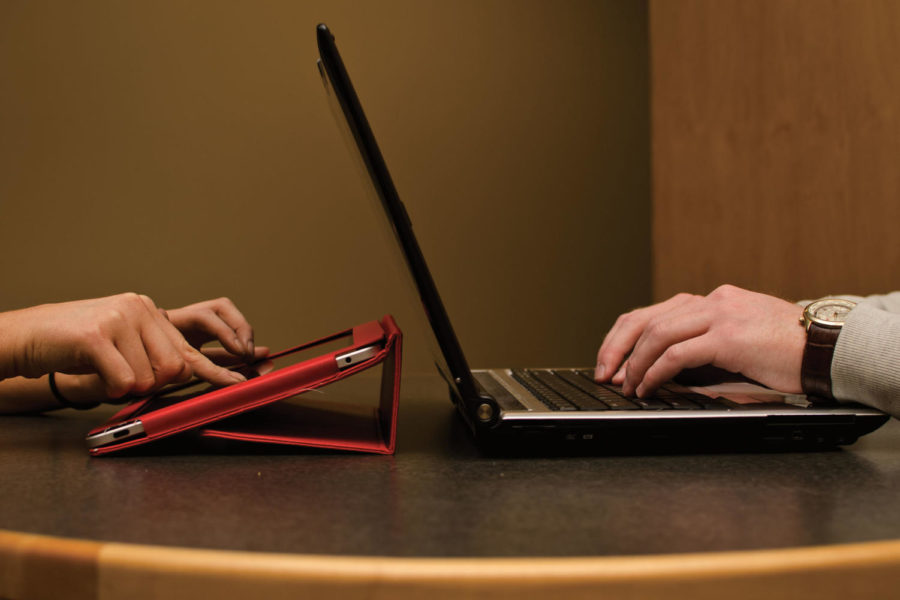Verhasselt: High performance, small size defines new ultrabook tech trend
Photo Illustration: David Derong/Iowa State Daily
Despite popularity of tablet computers, laptops still outlast and out perform their portable competitors.
January 13, 2012
This whole tablet/iPad craze is over. Yeah, I said it. The limited functionality of a tablet, the lack of a keyboard, the awkward way you hold it and the closed-garden selection of apps that were developed for a cellphone-sized screen rather than your device (I’m looking at you Apple) have sealed its fate. I’ve been there. I had an iPad until one day I found it in a drawer alone, unused and unloved. I’m reminded of it because of what’s happening right now in Las Vegas at the Consumer Electronics Expo, or CES as most refer to it.
Each year, hundreds of technology and innovation companies get together to show off their newest products and ideas. Last year, for example, 3D TVs dominated the show. This year, however, it’s “ultrabooks” that are making their debut.
Ultrabooks are a kind of ultraportable laptop computer. Smaller and lighter than the competition, they are able to perform similarly to full-sized laptops using low-voltage processors and solid-state drives, according to IBM. Simply put, these are computers that want to compete with the MacBook Air.
Their appeal? They’re fully functional laptops that weigh close to nothing, have amazing LED and sometimes OLED displays, have all the power you need (with some models featuring Intel’s Core i7 badged processors) and although they’re low voltage, they still pack a punch.
Sony, for example, has built into its ultrabook, the Vaio Z, the ability to use a high-end external graphics card to make gaming possible on the tiny machine.
The reason behind this push for ultrabooks is Intel’s doing, as they have not only pushed manufacturers into creating ultrabooks, but they are launching their own advertising campaign to push these new laptops, which all contain Intel-branded chips to the consumer. It’s a stab at ARM, a competitor making processors for most tablets and some phones, who have been eating Intel’s market share lately. It’s a “we knew you’d be back” type of statement Intel seems to be saying, and it looks like it’s working.
Apple, who created this category in 2008 with the MacBook Air, and Lenovo, who followed shortly after with its X300, produced some of the first ultra-thin laptops, but they never seemed to quite catch on as their pricing to performance ratio was not what consumers wanted. But now that prices have come down — and processing power has increased — the popularity for such devices has skyrocketed, with Apple projected to sell about 1.6 million of its machine.
These sales have caught the attention of the other PC manufacturers. Samsung, as an example, will be launching its ultrabooks starting at $899, with HP, Dell and others soon to follow with their own models. Although tablets are still hot on the heels of notebook computing, this could be a surge for not only laptop/notebook sales but in making laptops “hip and popular” statement purchases once again.

















